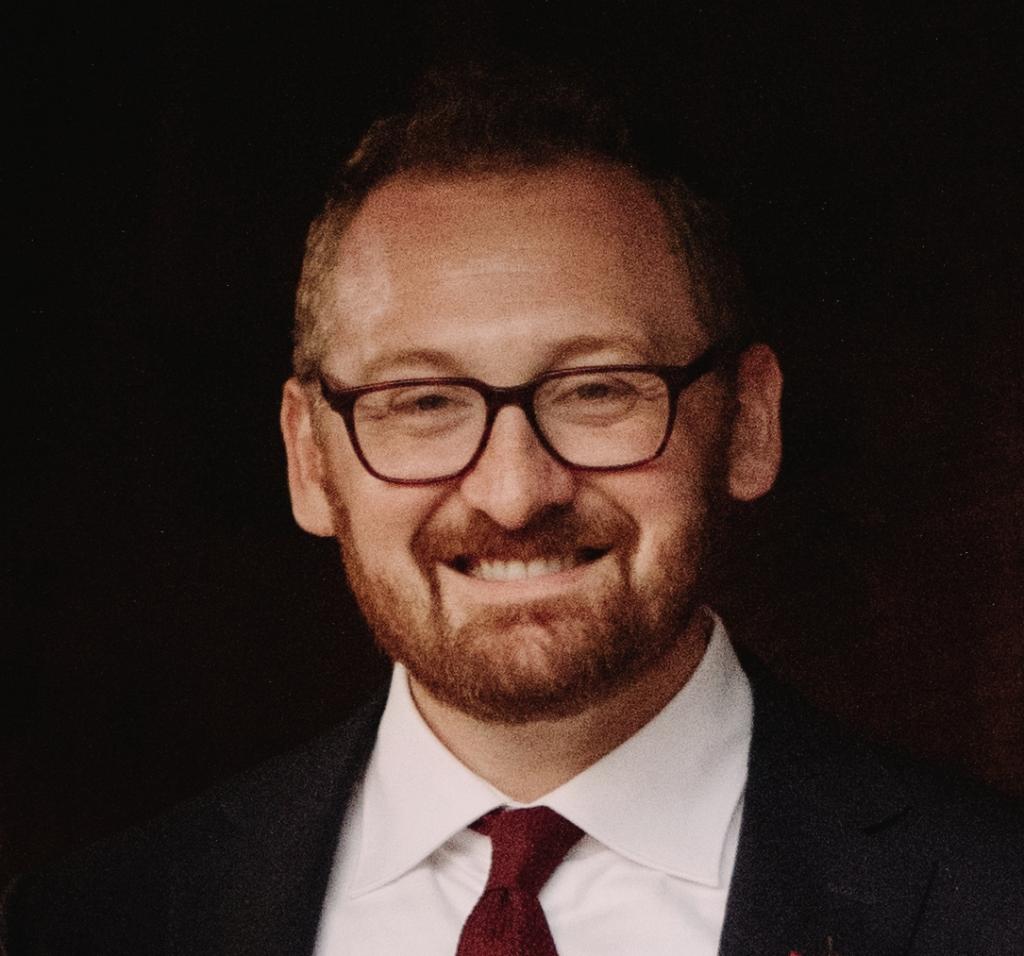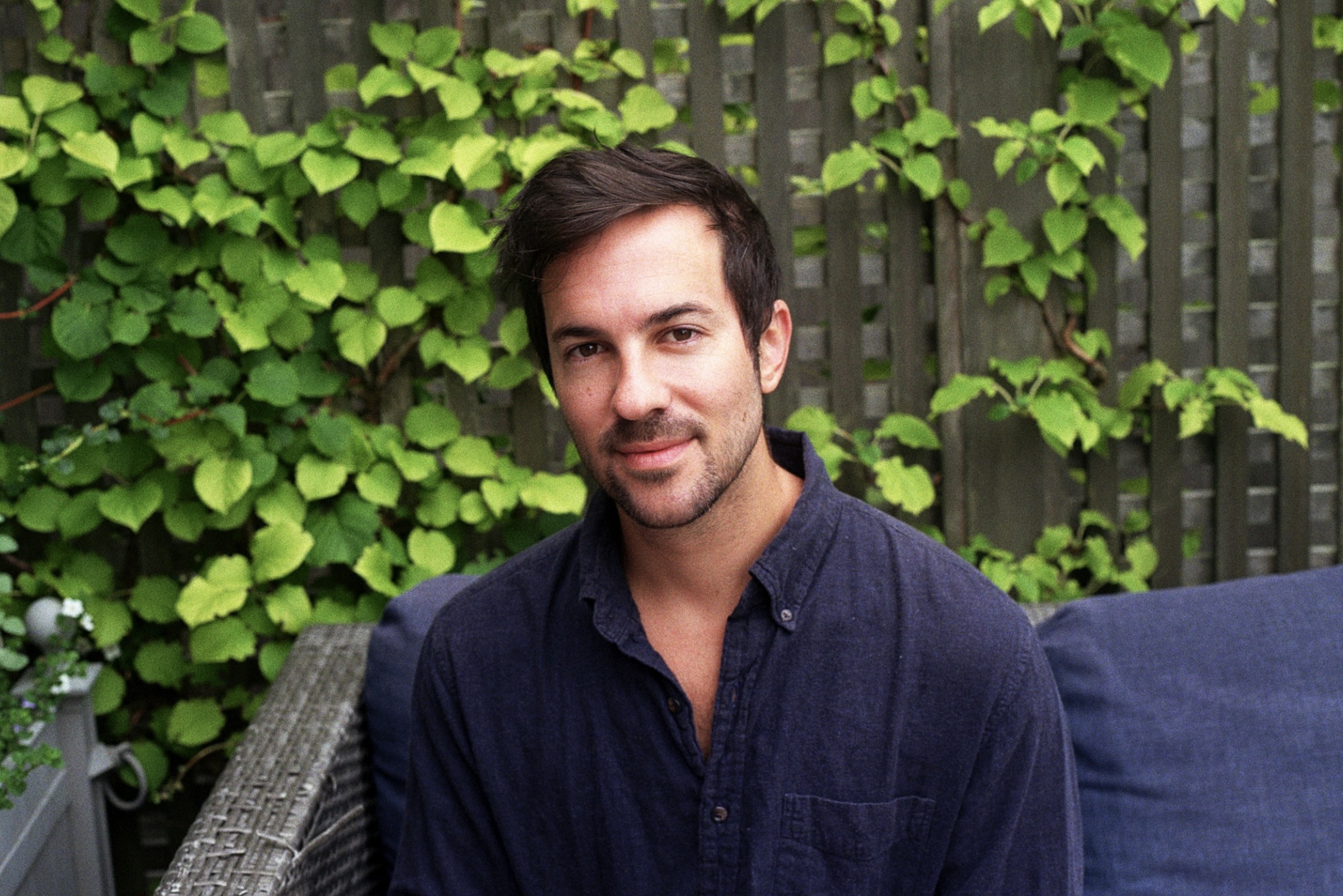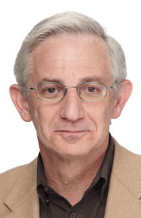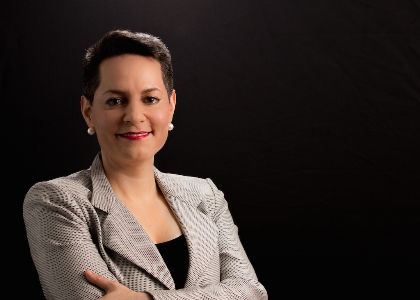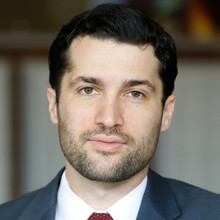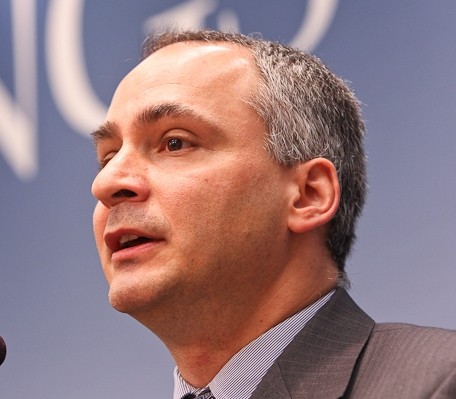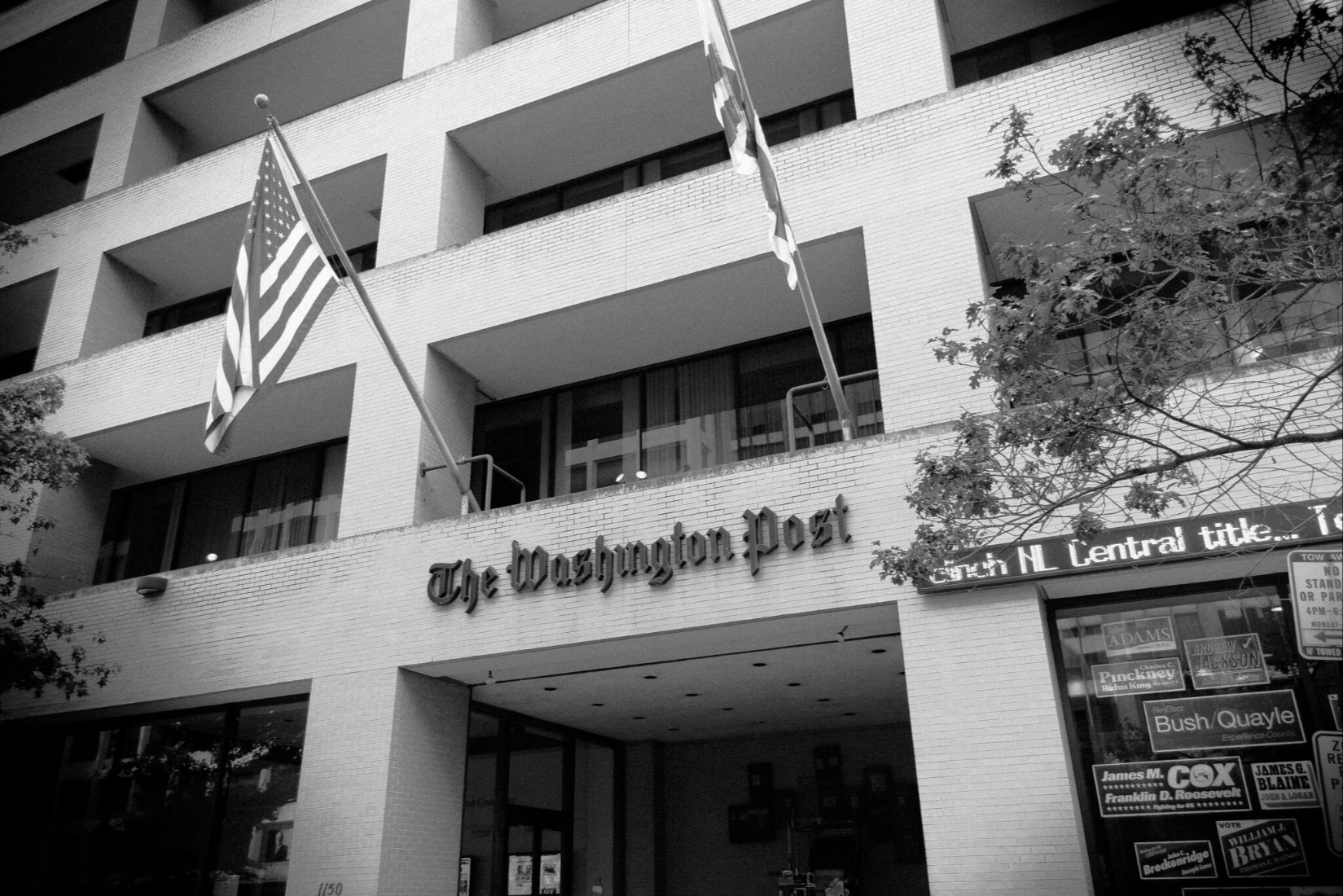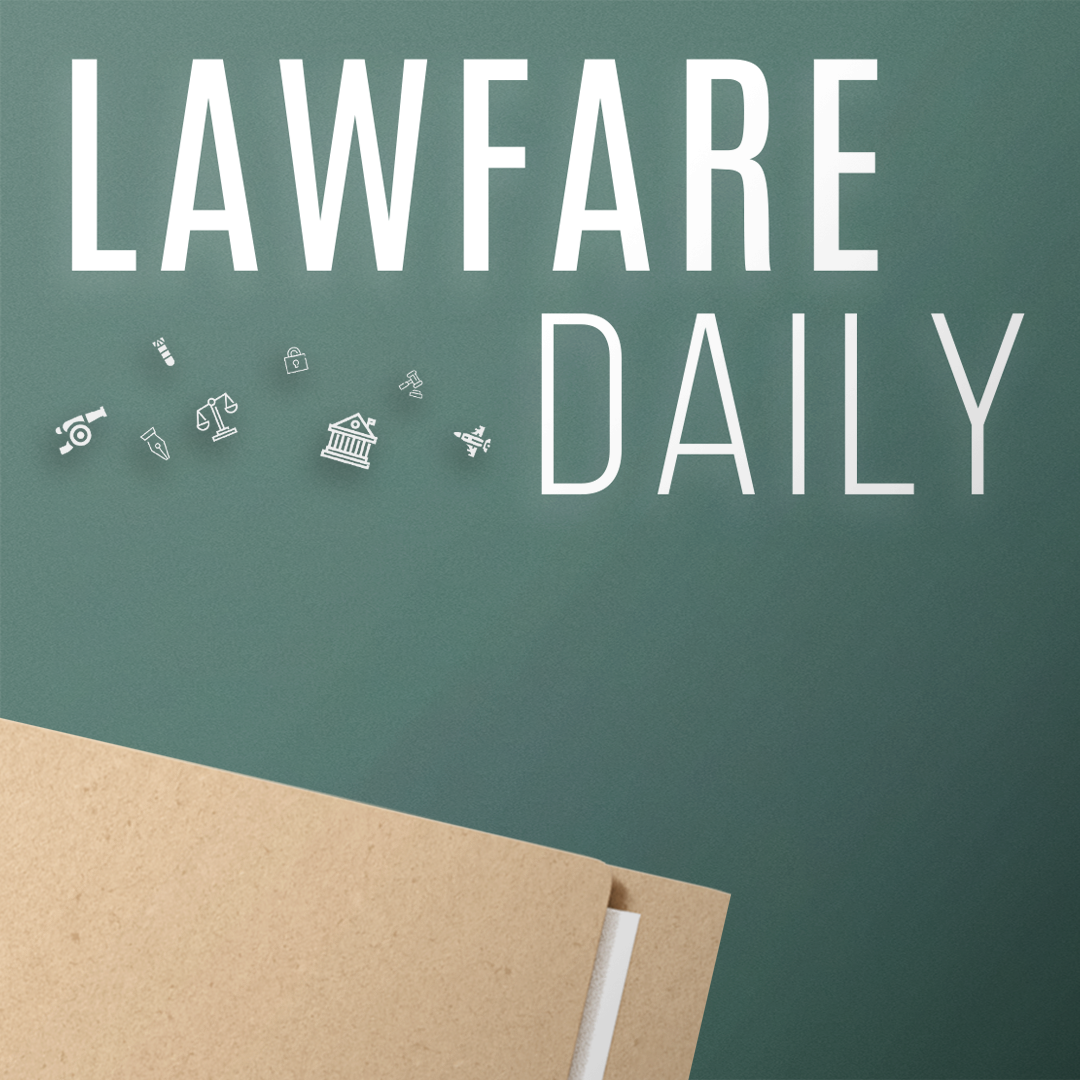The Jan. 6 Report: A Summary With Some Analysis
A high-altitude, chapter-by-chapter overview of the Jan. 6 committee’s final report.
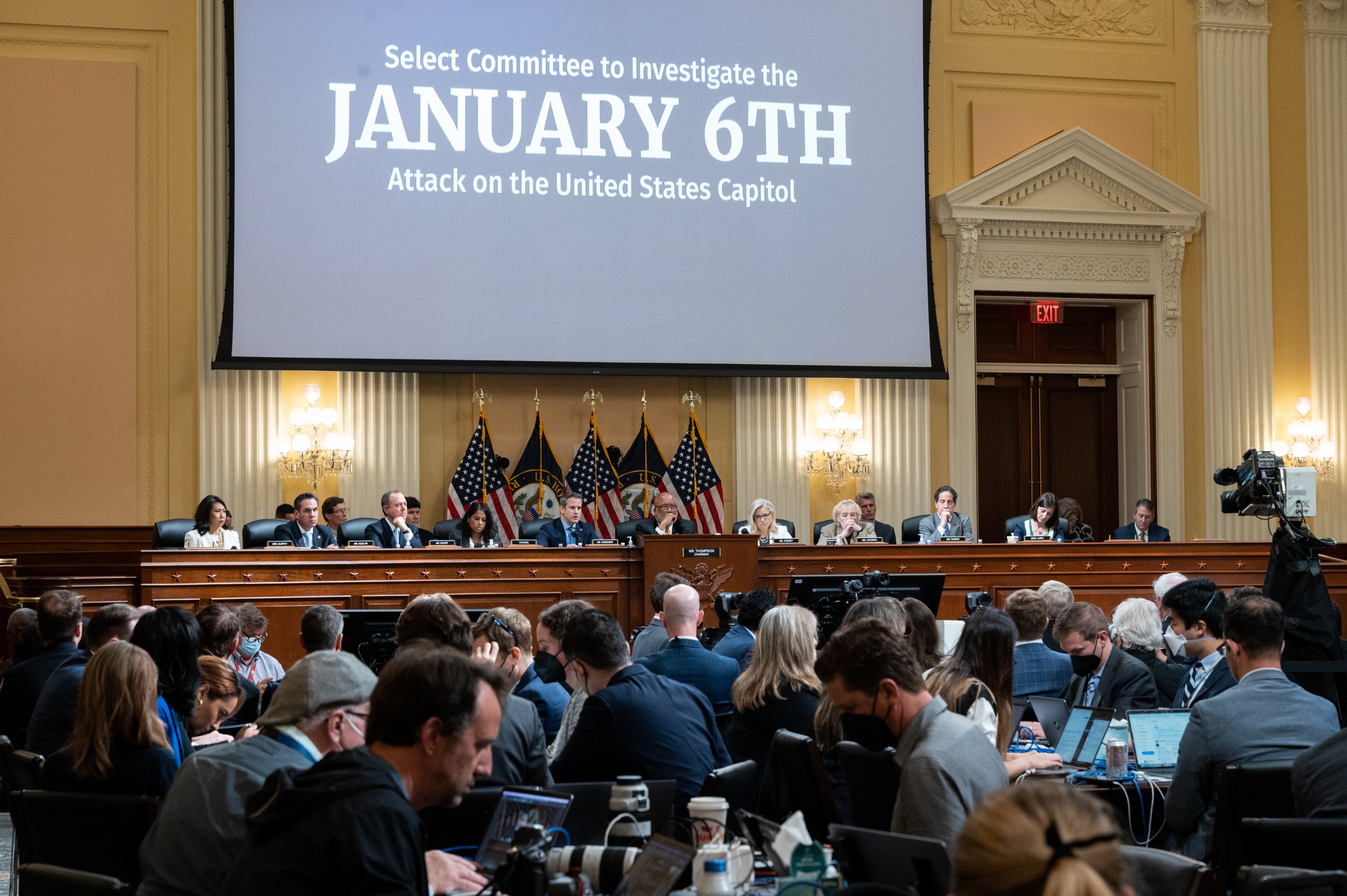
Published by The Lawfare Institute
in Cooperation With

’Twas three nights before Christmas
And all through the House,
Not a creature was stirring
Except the staff of the Jan. 6 committee, which was frantically trying to release their final report and many hundreds of accompanying documents before they all turned into pumpkins when control of Congress turned over.
They made mistakes in their frenzied late-stage push. The date on the front cover of the report reads, “December 00, 2022.” The report is numbered 117-000, which cannot possibly be correct. The FBI is called, at one point, the “Federal Bureau of Intelligence”—which is not, well, an intelligent error.
There were some unfortunate factual distortions on important issues.
And, of course, there were the endless news stories about the infighting between the committee members and the staff, and between Liz Cheney and other members.
And yet, the committee’s final report, finally released Thursday evening, is the most comprehensive account of the insurrection of Jan. 6, 2021, anyone has yet produced. While it mostly reprises and elaborates on information released during the committee’s spree of hearings over the summer, it contains a lot of new details. Perhaps more importantly, it brings together all of the committee’s work in a single narrative, carefully documented and put together in an accessible fashion.
As with the 9/11 Commission report two decades ago, people will argue about the committee’s recommendations. Reasonable minds will disagree about its criminal referrals. But as with the 9/11 Commission report, this document’s impact lies in the story it tells. For it is a story no other entity could have told. It required the power of government, the ability to compel testimony and force the production of documents. Yet it also required the ability to tell a story, an ability generally off limits to prosecutors outside of the context of indictment.
It is, typos and flaws and errors and inadequacies and all, an essential document for accountability in the post-Trump era.
No individual has yet read, much less digested, all 845 pages of it yet. But we collectively divided it up and formulated some initial thoughts on it. What follows is a high-altitude, chapter-by-chapter overview. It excludes the executive summary, which we discussed in several pieces this week.
We will have more granular analysis over the coming days and weeks regarding different parts of the report.
Chapter 1: The Big Lie (p.195)
The report’s first chapter alleges and seeks to establish that former President Trump was aware that he had lost the 2020 presidential election, yet nonetheless continued to perpetuate the “Big Lie” that he had won.
Trump was repeatedly made aware of evidence and data that showed he had lost, as well as evidence that his claims of election fraud were bogus.
Notably, the report shows that the Big Lie was not only false but also premeditated well in advance of Election Day. The report cites public comments made by Trump adviser Steve Bannon that if Trump lost the election, “He’s just gonna say he’s a winner,” as well as from longtime Trump confidant Roger Stone, who politely told associates that in the event of unfavorable results, “the key thing to do is claim victory…. No, we won. Fuck you.”
The report also details the efforts of Trump associate Tom Fitton to encourage Trump to “pre-emptively declare victory” in a speech on Election Night while in-person and mail-in ballots were still being counted. Fitton wrote that counting ballots any time after Election Day is “part of an effort by partisans to overturn the election results.”
The report outlines the numerous attempts of White House staff and other political confidants—including those who promoted Trump’s lies in public—to inform the former president that the election results were not disputable. Rather than listening to his staff, however, Trump hired a new legal team—referred to by former Attorney General William Barr as the “clown car”—to carry out his election fraud claims in court. The report goes on to detail numerous unsuccessful lawsuits, all but one of which confirmed the results of the election and dismissed Trump’s claims.
The crux of this chapter is the committee’s accounts of several case studies, in which Trump was specifically informed that his voter fraud allegation stories were false, but stuck with them anyway. The report focuses in particular on two conspiracy theories that Trump advanced.
The first of these was Trump’s repeated attacks on Dominion voting machines. According to the committee, Trump and his “clown car” of allies spread malicious lies and conspiracies about the legitimacy of the machines, including that their software was somehow connected to deceased Venezuelan dictator Hugo Chavez, China, Cuba, and “communist money.”
Trump was informed in an internal Trump campaign memo and by the Department of Homeland Security’s Cybersecurity and Infrastructure Agency that Dominion machines were accurate, reliable, and definitely not connected to foreign adversaries. Nevertheless, the president chose to lie.
In one of the more damning passages in the chapter, the committee suggests that Trump himself did not believe his own claim, reporting a phone call with lawyer Sidney Powell, who, according to the report, described a conspiracy theory similar to the one Trump himself promulgated about Dominion. In response to Powell, Trump muted his telephone, laughed, and told others in the room: “This does sound crazy, doesn’t it?”
The other Trump-pushed conspiracy theory on which the report focuses is Trump’s false claims about election fraud in Fulton County, Georgia. This stemmed from “selectively edited” video footage from a ballot counting center. Rudy Giuliani reportedly sent multiple state legislators edited footage that he claimed showed election workers repeatedly scanning fraudulent ballots that were hidden in suitcases under tables. They were, in fact, bins that are normally used to store ballots.
The committee notes that “President Trump was directly notified at least four different times that the allegations he was making were false.” He was informed that his allegations were false by Justice Department officials Jeffrey Rosen and Richard Donoghue, and twice by Georgia Secretary of State Brad Raffensperger. Yet Trump kept spouting these lies and even continued to cite the video as evidence of fraud in an email to Republican members of Congress.
The State Farm Arena video and Trump’s lies surrounding it are part of what the committee describes as “the Fake Ballot Myth,” which is the idea that fraudulent ballots for Biden were “injected into the vote counting process.” The report also cites instances in which Trump and his associates made claims that deceased people had cast ballots, that poll workers scanned ballots multiple times, and that a “truckload of ballots” was illegally delivered to a counting center in the middle of the night. Again, in these instances, the committee explains that Trump and his closest associates were confronted with evidence that contradicted their claims and were aware they were spreading misinformation to promote the Big Lie.
In the case of dead and ineligible voters supposedly casting ballots in Georgia, Trump even signed a verification—under oath—that these claims of voter fraud were accurate, even after having been made aware that these specific claims were inaccurate.
Later, a federal judge reviewing the document and emails discussing the matter between Trump and his staff concluded that “[t]he emails show that President Trump knew that the specific numbers of voter fraud were wrong but continued to tout those numbers, both in court and to the public” and found that the emails were “sufficiently related to and in furtherance of a conspiracy to defraud the United States.”
In this first chapter, the committee establishes that in all of the previously mentioned instances, Trump was made aware that he had lost the election and that his claims of fraud were false. Yet he continued to spread these lies in his speech on the Ellipse just before the Jan. 6 attack. The committee reports that he falsely claimed that the election had been stolen or was fraudulent “more than 100 times” in that speech. And as detailed below, Trump continued to perpetuate his lies, even after the attack.
Chapter 2: “I Just Want to Find 11,780 Votes” (p.263)
Having shown that Trump’s post-election activity was rooted in a deliberate lie, the report then turns in Chapter 2 to the first major prong of activity former President Trump and his associates undertook to leverage that lie: persuading and intimidating state officials into casting doubt on, or outright changing, the election results.
Beginning with Trump’s now infamous call to Georgia Secretary of State Brad Raffensperger in which he declared, “I just want to find 11,780 votes”—a line the committee borrows as the title for this section—the report traces the various lines of effort that Trump and his close advisers pursued to change the election results in his favor—from urging loyal supporters to take action to demonizing, threatening, and launching false allegations against those who stood in their way.
As the report describes it, these efforts were part of a two-pronged strategy that the Trump campaign developed prior to the election as a contingency plan if the voting did not go its way. The first prong involved undermining and discrediting the election results, including by having state and local officials decline to finalize the results. The second prong involved getting Republican-controlled state legislatures to use the doubt the campaign had sown as grounds for discarding the election results and appointing their own electors. This latter action would take place under a dubiously broad reading of state legislators’ authority under the Constitution’s Electors Clause. Both prongs, however, required cooperation from state and local officials. Hence the wide-ranging persuasion campaign to secure the cooperation of such officials.
Many of the activities documented in this section will be familiar to those who watched the news in the days following the 2020 election, or caught the committee’s related hearings earlier this year. But seeing them documented in systematic written detail underscores the sheer scale of what former President Trump and his senior advisers were pursuing. At one point, the report notes that the committee was able to identify “at least 200 acts of public or private outreach, pressure, or condemnation” by Trump and his inner circle, specifically targeting state legislators or state or local election officials—a number the footnotes describe as “almost certainly a significant undercount.” These outreach efforts were paired with a misinformation campaign spearheaded by Giuliani, which brought forward purported witnesses to and evidence of election corruption in a series of public events. Some of these were even staged with local officials to resemble official hearings in order to enhance the perception of their credibility.
The strategy behind the solicitation of state officials ran the gamut from carrot to stick. In case after case, the report documents Trump and his close advisers reaching out to Republican state officials to urge them to cast doubt on the election results, refuse to finalize them, or take steps to appoint an alternate set of electors out of patriotism and purportedly genuine concerns about corruption.
Yet as state and local officials pushed back and expressed doubts about the factual claims of corruption and the legality of the extraordinary measures Trump and his allies were asking of them, the strategy shifted. Several officials were told their lawyers were giving them bad advice and were put in touch with Giuliani and associated attorneys involved in the effort to advance their own unorthodox views of the law, generally to no avail. Others were presented with more plain arguments as to how acting would serve their own political self-interest and that of the party—and that doing otherwise would hurt both.
Ultimately, Trump and his allies often became hostile to the same public officials whose patriotism they had previously lauded, resulting in a tweet or other statement publicly declaring the official a “RINO” (Republican in name only) or otherwise implying they were too cowardly or beholden to Democrats to act.
Giuliani’s role as the public face of most of these efforts is well known and unsurprising. But the report documents the central role that other less well-known individuals played in developing this strategy, including White House officials Deputy Assistant to the President Vince Haley and Director of Presidential Personnel Johnny McEntee, former Speaker of the House Newt Gingrich, and Newsmax CEO Christopher Ruddy.
Perhaps most importantly, the committee is also careful to document Trump’s own personal involvement at nearly every stage of the campaign. As the report relates, Trump personally reached out to members of Congress, state legislators, and state and local officials in the days immediately following the election to solicit their cooperation, including through personal meetings at the White House.
Most of the 125 social media posts the report identifies as targeting state or local officials were issued from Trump’s own account. And in a Jan. 2, 2021, private briefing with almost 300 state legislators, it was Trump himself who joined to tell them that they had “the real power” to decide on their states’ electors.
In short, the report makes clear that the effort to secure cooperation from state and local officials in changing the election results was not some product of overzealous subordinates, but something in which Trump himself played a personal and central role.
Yet some of the most compelling elements of this section of the report do not relate to Trump and his inner circle, but those they targeted. Perhaps the most well known are Ruby Freeman and Shaye Moss, a mother and daughter pair of election workers whom Giuliani baselessly accused of fraud, and who subsequently became the focus of vicious, racist harassment by Trump’s supporters—an experience movingly presented during their testimony before the committee earlier this year and reprised during the rollout of the report’s executive summary this past week. But Freeman and Moss are just the tip of the iceberg; the report spends several pages listing numerous individuals—many of them Republican state and local officials—whom Trump and his allies attacked and who received everything from sustained harassment to death threats for themselves and their families in response. The inevitable conclusion is one that the committee drove home time and again in its hearings: that Trump and his supporters did knowing and deliberate harm to numerous Americans as part of their effort to keep him in the presidency, including to many fellow Republicans who were not persuaded by Trump’s arguments and sought to carry out their public duties in good faith.
Chapter 3: Fake Electors and the “President of the Senate Strategy” (p.341)
The report next turns to the concurrent “fake elector” scheme. It describes attorney Kenneth Chesebro as the chief architect of the scheme and the accompanying “President of the Senate” strategy, with White House Chief of Staff Mark Meadows, Giuliani, and Trump as its executors.
The report alleges that they attempted to carry out this plan against the advice of legal counsel and over the objections of White House staff and Justice Department officials. The section offers a detailed walkthrough of the fake electors plan, from its inception to its culmination at Trump’s Jan. 6 speech at the Ellipse, in which he demanded that Congress “do the right thing and only count the electors who have been lawfully slated.” The committee also offers important new details about how the fake elector scheme played out in each of the seven states in which it was attempted.
In addition to naming Meadows, Giuliani, and Trump, the report lists a roster of supporting characters, including “Chairwoman of the Republican National Committee Ronna McDaniel, Members of Congress, and Republican leaders across seven States—some of whom did not know exactly what they were being asked to do.”
The committee locates the plan’s origin in a series of legal memoranda by Chesebro (on Nov. 18, Dec. 9, and Dec. 13). By early December, Meadows took note of the first Chesebro memo and flagged it for Trump campaign senior adviser Jason Miller. A few days later, Miller sent Meadows a spreadsheet with the contact information “for nearly all of the 79 GOP nominees to the electoral college on the November ballot for Arizona, Georgia, Michigan, Nevada, Pennsylvania, and Wisconsin.” On Dec. 8, Meadows confirmed to a former Louisiana state legislator that he and his team were recommending that Trump electors from those states engage in an elaborate electoral cosplay. The idea was that if they act like electors, and vote like electors, and send their votes to Congress like electors, they might actually be treated as a competing slate of electors.
So the electors were to meet at their state capitols, call themselves to order, elect officers, cast their votes for president, certify their votes, and transmit that certificate to Washington. Meadows’s special assistant Cassidy Hutchinson confirmed Meadows’s involvement to the committee, citing dozens of calls and meetings involving the progress on the fake elector effort.
According to the report, by Dec. 7 or 8, Trump decided to pursue the plan and began to drive it personally. A few days before Dec. 14, Trump called McDaniel to “enlist the RNC’s assistance in the scheme,” and on Dec. 13 and 14, he tapped Giuliani to lead the fake elector plan’s implementation. Around this time, the campaign’s legal team tapped out, citing concerns about the legality of the scheme, which—after all—involved a course of conduct dangerously close to fraud. Giuliani and Chesebro, undeterred, continued to drive the plan:
In the days that followed this handoff [from the Trump campaign’s legal team to Giuliani], Chesebro would draft and distribute documents intended for use in the Trump team’s fake elector ceremonies that were then shared with key contacts in Arizona, Georgia, Michigan, Nevada, New Mexico, Pennsylvania, and Wisconsin. He also gave some of the groups step-by-step logistical guidance, such as when and where they should convene, how many copies each person would need to sign, and to send their fake votes to Congress via registered mail. “Pretty Simple!” he commented in some of these emails.
Giuliani delegated some of the implementation of the fake elector scheme to a campaign operative named Michael Roman, who, along with help from his team members, ran an “Electors Whip Operation”:
Roman sent an email on December 12th directing an aide to create “a tracker for the electors” with tabs for Arizona, Georgia, Michigan, Nevada, Pennsylvania, and Wisconsin, listing contact information, whether they had been contacted, whether they agreed to attend on December 14th, and names of “[s]ubstitute electors” to replace any reticent or unavailable participants as needed. Roman referred to others on this email as the “WHIP TEAM” and directed them to fill out the spreadsheet, to update him on “what you have and what you need,” and to plan on a call that evening.
Though the plan was helped along by the RNC and state Republican parties, one of the fake electors assured the committee that the Trump team drove the effort: “We fought to seat the electors. The Trump campaign asked us to do that.”
The committee makes a particular contribution in this chapter by detailing the scheme across all of the seven states and illustrating its scope and scale. While a fair bit of the activity was made public at the time, the committee effectively highlights the degree to which it was organized by the White House and the Trump campaign and the degree to which it was part and parcel of the White House’s pressure campaign on state officials.
Chapter 4: “Just Call It Corrupt and Leave the Rest to Me” (p.373)
This section focuses on one of the most dramatic, though also one of the most elucidated, episodes of the post-election period: Trump’s efforts to pressure his own Justice Department to take actions that could help overturn the election.
The chapter tracks a variety of schemes that Trump pushed—with increasing degrees of desperation as the Jan. 6 certification approached—and describes how individuals within the department responded.
The first scheme began immediately after the election. In fact, by former Attorney General William Barr’s account, it began “right out of the box on election night”: Trump claimed there was major election fraud underway, and he began pressuring the Justice Department to open investigations into it. The scheme seems to have been initially merely a part of Trump’s efforts to sow distrust in the electoral outcome—the imprimatur of the Justice Department investigation being a particularly effective way of imputing fraud.
At first, the report contends, Trump’s claims were vague and essentially expressions of the so-called “Red Mirage,” the effect in which Democratic votes tended to come in later as a result of Democratic use of mail-in voting.
Within days, however, Trump was leveling an “avalanche” of claims that Barr described as “like playing Whac-a-Mole.” This section of the report relies heavily on the testimony of Barr, who emerged during the committee’s hearings as a star witness, delivering such memorable lines in his interview as: “I made it clear I did not agree with the idea of saying the election was stolen and putting out this stuff, which I told the president was bullshit.”
But the committee does not let Barr off the hook: It notes that whatever doubts he may have harbored, he did, in fact, authorize investigations into fraud allegations despite a clear lack of evidence. And it emphasizes that Barr did so notwithstanding Justice Department policy effectively prohibiting substantive investigations of this nature until after elections are certified.
In any case, Barr resigned on Dec. 14 after giving an interview to the Associated Press in which he unambiguously stated that the department had not identified fraud sufficient to change the outcome of the election. The same day, Trump’s assistant sent newly installed Acting Attorney General Jeffrey Rosen two documents providing talking points and purported evidence of election fraud in Antrim County, Michigan. From that point on, the pressure campaign focused on Rosen and his acting deputy attorney general, Richard Donoghue. Trump pushed them to take controversial actions for which there was no legal support—for instance, having the department seize voting machines (it would need a warrant, and there was no evidence to support one) and filing suit in the Supreme Court to allege election fraud (the U.S. government, which the department represents, would not have standing to bring such a suit). And in a series of meetings and phone calls, Trump continued to demand that the department do more to investigate alleged fraud.
Here a new character enters the committee’s story: Rep. Scott Perry of Pennsylvania, who called Donoghue, reportedly at Trump’s request, to complain that the department was not “doing its job on the election” and to provide documents alleging voter fraud in his own state. Perry’s role turns out to be much more significant than mere phone calls. According to the report, Perry introduced Trump to Justice Department lawyer Jeffrey Clark, who plays a central role in two other schemes.
Clark was the driving force behind a now-famous draft letter to Georgia state officials. The draft letter, which was never sent, stated that the Justice Department believed that in “Georgia and several other states” there had been irregularities in the election, and recommended that the Georgia legislature convene a special session to appoint an alternate slate of electors. It echoed precisely the “fake elector” scheme described in Chapter 3—in part, according to the report, because the Trump campaign’s efforts to execute the plan were failing, and the strategy had shifted to using the Justice Department instead. The letter was drafted by Ken Klukowski, whose appointment to the department in mid-December had been fast-tracked and who had previously been in close contact with John Eastman (a key figure in Chapter 5). But the report makes clear that Clark “dictated the substantive key points of the letter to Klukowski and told him exactly what to include.” And it was Clark who sent the letter to Rosen and Donoghue on Dec. 28.
Both refused to sign the letter. Donoghue said, “There is no chance that I would sign this letter or anything remotely like this” and that sending the letter “would be a grave step for the Department to take and it could have tremendous Constitutional, political and social ramifications for the country.” (The report has much more to say about Donoghue’s response than Rosen’s, which suggests that he may have been more forthcoming in his testimony on this topic than Rosen was; it also seems there was more documentary evidence of Donoghue’s response.)
In a meeting on Dec. 28 to discuss the letter, Rosen and Donoghue also learned that Clark had been in direct contact with Trump—including a meeting in the Oval Office—thanks to Rep. Perry’s introduction. The committee emphasizes that this was in violation of the Justice Department’s White House contacts policy, writing that “the contacts policy was designed for situations just like this where political figures might try to influence criminal investigations or legal actions taken by the Department of Justice, as President Trump [was] attempting to do.”
But Clark was dismissive of the policy, saying, “It’s a policy, there’s a lot more at stake here than a policy.” He then proceeded to effectively go rogue, calling witnesses, securing a briefing on foreign election interference from the Office of the Director of National Intelligence (which found none that supported his theories), and pursuing his own investigations.
On Jan. 2, Rosen and Donoghue again confronted Clark, telling him to cease his unauthorized activities and stop meeting with Trump. Clark, who was still pushing to send the letter to Georgia officials, informed them that Trump had offered him the position of acting attorney general. He promised to decline the offer if Rosen and Donoghue would agree to sign the letter. Both refused; Rosen even reiterated his refusal in writing later that night.
The most dramatic events occurred on Jan. 3, only three days before the attack on the Capitol. Clark informed Rosen that he had agreed to accept Trump’s offer for him to serve as acting attorney general. Rosen snapped into action, working with Meadows to set up an emergency meeting with Trump for that evening and mobilizing support, including by orchestrating a conference call with Justice Department leadership in which all present agreed that they would resign en masse if Rosen were removed from office.
Documentary evidence suggests that this very nearly came to pass. White House phone logs list four calls between Trump and Clark; and in the last, Clark is described as “Acting Attorney General,” suggesting that he had accepted the job toward the end of that day. And some resignation letters were already drafted.
But at the 6:15 p.m. emergency meeting—which lasted three hours and included Rosen, Donoghue, and Clark as well as Steven Engel, Eric Herschmann, and Pat Philbin—Trump was convinced to reverse course. Clark defended his appointment, promising to conduct “real investigations” and “pursue these matters in the way that the President thought most appropriate.” But everyone else in the room confirmed that they and the rest of the Justice Department leadership would resign, that sending Clark’s letter was, in Engel’s words, a “murder-suicide pact.” The committee reports that Trump was “clearly rattled by the threat of mass defections” and ultimately concluded that Clark “won’t be able to get it done” if everyone else quit.
Chapter 5: “A Coup in Search of a Legal Theory” (p.427)
The report next turns to what was in many ways the last redoubt for the procedural effort to turn the election results in Trump’s favor: the ultimately unsuccessful effort to persuade Vice President Mike Pence to change how the electoral votes would be counted.
The report describes the impetus for this effort as the work of two lawyers associated with the Trump campaign, Kenneth Chesebro and John Eastman. Following the election, both advanced arguments as to why the Constitution empowered the vice president, who presides over the joint session of Congress that counts the electoral votes, with deciding which electoral votes from each state get counted, even in ways contrary to the 1887 Electoral Count Act that normally governs those proceedings.
This was an awkward argument for Eastman to make given that, as the committee documents, he’d expressed contrary views only just prior to the election. Their arguments also faced strong pushback from other administration lawyers, including in the Office of the White House Counsel and in the Office of the Vice President. The lawyers in these offices dismissed the theory as poorly reasoned and engaged in a number of confrontational White House meetings over its substance. Eastman himself acknowledged during a meeting with Trump and Pence that his proposal went against the Electoral Count Act, and he later admitted that it would not prevail before the Supreme Court.
For their part, Pence and his advisers were unpersuaded by the argument that he had the authority to play more than a ceremonial role in the counting of the electoral votes. The report notes that they had decided by Jan. 2, 2021, that Pence would not seek to change any of the electoral vote counts, several days before the joint session of Congress. Yet a campaign to persuade him otherwise was already underway.
Eastman appeared on Steve Bannon’s podcast on Jan. 2 to advance a version of his theory and posited that Trump’s ability to stay in office hinged on Pence’s “courage and spine.” He doubled down on this with a revised memo laying out two possible paths, one in which the vice president rejected electors that Biden had won outright and another in which he would send the decision back to the state legislatures for ratification.
This, in turn, appears to have triggered a Jan. 4 meeting at the White House with President Trump and Vice President Pence, at which Eastman and Trump attempted to persuade Pence of their theory. Notably absent from that meeting, the report notes, was White House Counsel Pat Cipollone, who declined to tell the committee on executive privilege grounds why he sat out that meeting. In its report, the committee speculates that Trump likely asked Cipollone not to attend, presumably because he had been highly critical of Eastman’s theory in prior engagements.
This was only the first of several engagements the report documents between Trump and Eastman on the one hand and Pence and his advisers on the other over the next several days. Trump and Eastman paired these private engagements with a more public pressure campaign, with Trump openly taunting Pence to act pursuant to Eastman’s theory in a series of public remarks—a call amplified by Bannon and others in the alt-right media.
When Eastman met with Pence’s advisers again on Jan. 5, he continued to advocate in favor of the more aggressive of his proposals: that Pence should outright reject the electors instead of just sending them back to their states. His push in favor of this approach seemed to come from Trump’s public discussion of the issue. Earlier that day, he had tweeted that “[t]he Vice President has the power to reject fraudulently chosen electors.” A one-on-one meeting between the president and the vice president followed. Although the committee was not able to acquire direct evidence of this conversation, testimony from Marc Short, Pence’s former chief of staff, indicates they did not end on good terms.
Despite the private and public pressure on Pence, the vice president remained “steady” and “determined” to his understanding of his role. Regardless, even on Jan. 6, Trump continued his efforts to change his vice president’s mind; there were more tweets and heated calls even as Pence’s life was increasingly at risk. At the rally, after Giuliani called for a “trial by combat,” Eastman repeated his “demand.” Trump concluded by stating that he “hop[ed] Mike has the courage to do what he has to do”—in the view of the committee, a direct call of action to his angry supporters, and a final attempt to sway Pence.
The chapter concludes by recounting the tense circumstances under which the certification of the election occurred. The report focuses on the steps Pence took to address the fraud claims, for example by changing the script to address the fake electors scheme. Even after the rioters broke into Congress, he remained in the building, so that the certification could be carried out after the attack. The Senate reconvened at 8:06 p.m. and the joint session lasted until the early morning of the next day.
Chapter 6: “Be There, Will Be Wild!” (p.499)
The report next fleshes out how Trump summoned a violent mob to Washington, D.C., for Jan. 6. It includes details about the rich cast of fringe characters who helped carry out the insurrection and whom many of us failed to take seriously enough precisely because they seemed so marginal.
These include, in no particular order, “Stop the Steal” promoter Ali Alexander; conspiracy theorist and Infowars host Alex Jones; dirty trickster and longtime Trump adviser Roger Stone; Oath Keeper militia group founder Elmer Stewart Rhodes III; Proud Boys chairman Henry (Enrique) Tarrio; leader of Latinos for Trump Bianca Garcia; white supremacist, antisemite, and Groyper leader Nick Fuentes; Vets for Trump leader Joshua Macias; and a rag-tag group of militiamen associated with various Three Percenter groups whom most readers have never heard of but who proved, nevertheless, quite dangerous on Jan. 6.
Although the evidence the committee provides is overwhelming that Trump’s infamous tweet of 1:42 a.m. on Dec. 19, 2020—“Big protest in D.C. on January 6th. Be there, will be wild!”—instantly called all of these dangerous people and their followers into action, the crucial question for those seeking criminal accountability is whether Trump also understood that he was summoning many of these people into violent, criminal action.
The committee’s best evidence that he did may be the impact that his tweet had on an obscure—outside Trump World—site called TheDonald.win. A former sub-Reddit that was exiled to an independent site when Reddit banned the group in mid-2020, the site was composed of about 790,000 of Trump’s more ardent and, judging from rhetoric at least, violent supporters.
Within three minutes of Trump’s tweet, the site’s message board posted: “Trump Tweet. Daddy Says Be In DC on Jan. 6th.” That post was pinned to the top of the site from that moment until the insurrection, where it garnered 6,000 comments and more than 24,000 upvotes. A typical comment was, “He can’t exactly openly tell you to revolt. This is the closest he’ll ever get.” The committee writes: “In the days that followed, users on TheDonald.win discussed: surrounding and occupying the U.S. Capitol; cutting off access tunnels used by Members of Congress; the types of weapons they should bring; and even how to build a hangman’s gallows.”
The key person who could have told the committee exactly how much Trump knew about TheDonald.win was, the committee recognizes, Dan Scavino, the former president’s deputy chief of staff for communications and his “social media guru.” Alas, Scavino refused to cooperate, invoking executive privilege. But the committee presents substantial circumstantial evidence that Scavino and others likely kept Trump abreast of TheDonald.win, and at least some of that evidence might be the kind that a FBI summary witness could furnish in a criminal trial. For instance:
Even before President Trump was elected, his social media team monitored the site’s users. In the summer of 2016, then candidate-Trump himself engaged in a written question and answer session on TheDonald.win, which at the time was a forum on Reddit. … Dan Scavino, the President’s social media guru, amplified content from this site. … In 2017, President Trump tweeted a video of himself attacking CNN. In 2019, Politico reported that Scavino “regularly monitors Reddit, with a particular focus on the pro-Trump /r/TheDonald channel.”
Nor were the references to TheDonald.win in Trump’s immediate circle limited to years past. On the same day that Trump tweeted out the “will be wild” tweet—Dec. 19, 2020—he also tweeted a video entitled “Fight for Trump!”
The video had appeared on TheDonald.win two days earlier, the committee notes, and its title—“Fight for Trump!”— became the chant that greeted Trump when he stepped to the dais to deliver his speech at the Ellipse on Jan. 6.
Similarly, just one week earlier, on Dec. 30, according to the committee, Trump campaign senior adviser Jason Miller proudly texted chief of staff Mark Meadows, “I got the based FIRED UP,” with the proof being a link to a TheDonald.win comment thread responding to a post by Miller promoting Jan. 6. “Users in the thread,” the committee notes, “made comments such as ‘gallows don’t require electricity,’ and that ‘millions will bust through the doors if they try to stop Pence from declaring Trump the winner.’”
There was one last tidbit of news contained in this chapter, though it related to a different topic from the main theme of the chapter: the subject of Trump’s semi-secret plan or at least desire to march to the Capitol himself with his followers. During a discussion on Jan. 4, an adviser, Max Miller, tried to dissuade Trump from doing so, citing the security risks. In response, Trump “floated the idea of having 10,000 National Guardsmen deployed to protect him and his followers from any supposed threat by left-wing counterprotesters.” The committee acerbically observes that, in contrast, Trump never ordered the National Guard “to protect the U.S. Capitol, or to secure the joint session proceedings.”
Chapter 7: 187 Minutes of Dereliction (p.577)
The penultimate chapter fleshes out the details surrounding Trump’s “dereliction of duty” during the attack itself. As the commander in chief, President Trump, more than any other American, had the power to marshal U.S. government resources to stop the attack on the Capitol. Yet the committee notes that he made no calls to any federal law enforcement agency, to the Department of Defense, the Capitol Police Department, or to the D.C. Mayor’s Office to quell the violence. For 187 minutes, the committee contends, he failed to act. This chapter provides a detailed accounting of those 187 minutes.
The committee begins by emphasizing that there was no question that Trump had the “power to end the insurrection. He was not only Commander in Chief of the U.S. military, but also of the rioters.”
The committee cites testimony from members of the mob, including Stephen Ayres, Jacob Chansley, and Oath Keeper Ed Vallejo, indicating that they followed his orders about when to leave the Capitol.
From the time Trump finished his speech at the Ellipse at 1:10 p.m. to the time he finally filmed the video from the Rose Garden at 4:07 p.m. telling the rioters to go home, the report stresses that Trump failed to disavow the rioters. To the contrary, he supported their cause, tweeting at the height of the violence that his own vice president “lacked the ‘courage’ to act—a statement that could only further enrage the mob.”
With respect to Trump’s opinion of and attempts to pressure his own vice president either to reject certified electors or delay the electoral count pursuant to Eastman’s unconstitutional theory, the report also gives a detailed accounting of how the final written draft of his speech to supporters at the Ellipse ended up containing the line, “And we will see whether Mike Pence enters history as a truly great and courageous leader.” When Trump actually delivered the speech, his anger at the vice president was readily apparent, as he ad-libbed lines that were not present in the final draft of the speech.
The report also discusses Trump’s rage that the venue for his Jan. 6 speech looked half-empty because a significant number of his supporters (about 25,000 of the 53,000 people) refused to walk through the magnetometers to be screened for weapons. Trump, however, had no concern with letting these people into the venue, notwithstanding the fact that many of them were likely armed.
The committee also focuses on evidence showing that Trump wanted to march to the Capitol alongside his supporters, as well as his subsequent anger when he could not do so. Trump announced his intentions to join his supporters in a march to the Capitol during his speech, which prompted House Republican Leader Kevin McCarthy to call Cassidy Hutchinson in the middle of the speech to tell her that “you guys” should not come. The announcement also put the Secret Service on alert, prompting them to determine how they would enable the president’s “walk/motorcade over.” White House officials who were monitoring the situation thought that if the president joined the march, what may have been presumed to be a “normal democratic event” would move into “something else.” Ultimately, the logistics made the move “all but impossible” for the president to join the march.
The report indicates that the committee was particularly interested in evidence showing that the president “actually intended to participate personally in the January 6 efforts at the Capitol, leading the effort to overturn the election either from inside the Chamber or from a stage outside the Capitol.”
Such facts are relevant to President Trump’s intent on Jan. 6. A book published by Mark Meadows “conflicted sharply” with both the informal information and more formal evidence gathering conducted by the committee. Ultimately, the committee concludes that the evidence shows the president repeatedly requested to be taken to the Capitol on Jan. 6 and was irate when he could not be. The now infamous altercation in the presidential vehicle is one significant piece of that evidence.
The chapter next turns to efforts taken by White House Staff and the president’s family to get him to put out a statement that would stop the violence taking place at the Capitol. The report notes that what happened during the 187 minutes from 1:10 to 4:17 p.m. is “undocumented” from an official standpoint. In an effort to document what happened, the committee, for example, subpoenaed several members of Congress who spoke with Trump during this time period, but they did not comply with the subpoenas. The committee has referred those individuals to the House Ethics Committee.
There were repeated efforts over the course of the afternoon by the president’s advisers and family members to get him to tell the mob to leave the Capitol. As previously referenced, Trump’s first tweet (at 2:24 p.m.) during the attack was actually an attack on his own vice president—a tweet that exacerbated the situation by “enlarg[ing] the target on the Vice President’s back.” The report presents evidence indicating everyone at the White House—except the president, that is—agreed that the rioters needed to leave the Capitol.
While the violence at the Capitol was raging on, Trump started calling Republican members of Congress to talk about making objections to the electoral count. When House Leader Kevin McCarthy spoke to Trump while he was sheltering in a secure location with his colleagues, he urged the president to get the rioters to stop. Trump replied, “Kevin, maybe these people are just more angry about this than you are.”
Finally, at 4:03 p.m., Trump left the dining room to shoot the video in the Rose Garden. At the end of the statement, which was drafted by Trump’s son-in-law Jared Kushner, Trump finally told the rioters to go home. The video took less than four minutes to shoot and was released publicly at 4:17 p.m. The crowd immediately began dispersing. The report emphasizes that the release of the video made clear the president could have called off the riot any time that day and that he released the video only when it became clear that the riot would not stop the certification of the vote.
The chapter concludes with a summary of the efforts Trump and Giuliani continued to take to delay the joint session of Congress and a discussion of Trump’s utter lack of remorse for any of the violence that occurred on Jan. 6.
Chapter 8: Analysis of the Attack (p.637)
For the most part, this chapter does not provide new information, though the information may be new to many readers. In it, the committee provides an overview of what it has learned about the insurrection through the rich details gleaned from the more than 900 criminal cases that the Justice Department has brought against individual rioters. Accordingly, most of this section is based less on the committee’s own interviews or depositions and more on the thousands of documents, exhibits, and trial transcripts that its staffers have pored over.
The report begins its analysis by explaining how the unaffiliated members of the mob assembled on the Capitol grounds and the Ellipse, carrying both conventional and improvised weapons. Members of the mob were in possession of knives, blades, canisters of pepper spray, brass knuckles, stun guns, body armor, gas masks, batons or blunt instruments, scissors, needles, screwdrivers, an axe, a hockey stick, and flagpoles, which they turned into weapons.
Beyond these rioters, the report carves out a separate section to detail how the 200-300 Proud Boys led their march down the National Mall. The analysis highlights the breadth of the Proud Boys’ network, which was led by its then-chairman, Enrique Tarrio. Tarrio did not himself participate in the riot, having been arrested two days earlier and ordered to leave Washington. But he allegedly communicated with his men throughout the day, as he worked remotely from Baltimore.
Then there was Ethan Nordean, president of his local Proud Boys chapter in Seattle, who was regarded as the leader for Jan. 6 after Tarrio was arrested. There was Zachary Rehl, president of the local Philadelphia chapter, and Joseph Biggs, senior Proud Boys member and event “organizer” for the group.
Biggs had also previously worked with Alex Jones and Infowars. The Proud Boys’ capability to work as a cohesive whole with a leader orchestrating the group remotely, and Rehl commanding the group on the ground, helped them launch an effective attack that day.
According to the committee, members of the Proud Boys removed fencing around the Peace Circle—which they describe as a crucial geographic location because of its setting at the end of Pennsylvania Avenue, and just in front of restricted Capitol grounds.
After Proud Boys and other protesters marched down Pennsylvania Avenue to the Peace Circle, they removed fencing in the area, clearing the route for other protesters to access restricted Capitol grounds. At the next security barrier, the Proud Boys violently clashed with police officers, eventually overtaking them and advancing toward the Capitol.
At Garfield Circle—which sits parallel to the Peace Circle—other rioters breached security fencing and joined the mob at the lower West Plaza of the Capitol, where they were met by U.S. Capitol Police officers.
In this section, through its description of the beginning of the attack, the committee establishes that the Proud Boys’ actions were premeditated and coordinated and, according to one of the group members, that Proud Boys leadership was “willing to do whatever it would take, including using force against police and others” to stop the certification of the Electoral College vote that day.
In section 8.4, the committee highlights the role of Alex Jones in the violent mob’s descent on the Capitol. Despite Jones’s claims that he attempted to calm the violent crowd, the committee finds that he actually helped incite it. The committee writes that Jones’s actions—including but not limited to encouraging members of the crowd with a bull horn to “take our country back”—coincided with two breaches of police lines on restricted grounds, and one breach of the Capitol. Further, the committee explains that, despite Jones’s claims, “a review of evidence showed that Jones simultaneously called on the crowd to ‘fight’ and start a ‘revolution,’ while also occasionally peppering his rhetoric with the word ‘peacefully.’”
The remainder of the chapter presents a rich timeline of exactly how hundreds of insurrectionists stormed the Capitol. The committee highlights, with precise time stamps of their movements, the conduct of Guy Reffitt, a member of a Texas Three Percenter Group and one of the first to advance on the police line on the north side of the West Plaza; Daniel “Milkshake” Scott, a member of the Proud Boys who, while being videotaped walking toward the Capitol with other Proud Boys on the morning of Jan. 6, blurted out, “Let’s take the fucking Capitol”; Michigan gubernatorial candidate Ryan Kelley, who climbed up the scaffolding and waived protesters on; Dominic Pezzola, a Proud Boy from New York who smashed out the first window with a stolen police riot shield, allowing the first rioters to jump in near the Senate wing door at 2:13 p.m.; Kevin Seefried, who carried a full-size Confederate battle flag into the building for perhaps the first time in history; and five individuals associated with Nick Fuentes’s America First movement who breached several areas of the Capitol and, upon exiting, used a metal barricade to assault a law enforcement officer and destroy media equipment.
The committee also highlights text messages between Oath Keepers’ leader Stewart Rhodes and Roger Stone, Enrique Tarrio, Ali Alexander, Alex Jones, and others, as well as call detail records of his phone calls with Oath Keepers Kelly Meggs and Michael Green, shortly before Meggs led about a dozen Oath Keepers up the East Steps and through the East Rotunda doors into the Capitol.
The report also includes chilling details concerning the evacuation of Vice President Pence, Speaker Nancy Pelosi, House Majority Leader Steny Hoyer, House Majority Whip James Clyburn, and the rest of Congress. It concludes with a detailed account of law enforcement’s efforts to clear rioters out of the Capitol and its grounds, notably taking nearly four hours to complete this mission—double the amount of time the protests had gone on for.
Recommendations (p.689)
Among the committee’s goals was to, as Rep. Jamie Raskin (D-Md.) described it in September 2022, make “sweeping legislative recommendations about what needs to be done to fortify America against coups and insurrections and political violence in the future.” In the end, the recommendations do not necessarily live up to that billing.
In several cases, the committee’s recommendations, though welcome, trod little new ground. Indeed, the first of the committee’s recommendations is, at the time of this writing, nearly obsolete; the committee’s call for Congress to pass reforms to the Electoral Count Act was heeded when the House and Senate included language doing so in the omnibus spending bill passed this week.
Two additional ones, involving legislation to establish a cause of action for Congress to be able to enforce subpoenas in federal court and congressional action to enhance penalties for threats against election workers, have already been explored in Congress; the former was included in the Protecting Our Democracy Act passed by the House in December 2021 and the latter has been the subject of both hearings and proposed legislation.
A proposal similar to a fourth, to make the joint session to count the Electoral College votes a National Special Security Event, was offered by the Government Accountability Office in an August 2021 report. And a fifth set, concerning increased oversight of, and funding for, the Capitol Police, has been the subject of numerous hearings and reports since Jan. 6.
One specific recommendation, that the Capitol Police board members should appear before the Committee on House Administration and the Senate Rules Committee jointly, was included in legislation passed in December 2021—but according to a report released by a group of House Republicans this week, that has yet to happen. (It also appears, according to a somewhat cryptic footnote, that the select committee has handed off “concerns about two specific areas of security” at the Capitol to the Committee on House Administration.)
Outside of congressional recommendations, the committee also makes criminal referrals to the Department of Justice and other prosecutorial authorities to prosecute individuals involved in the insurrection. Among other things, the committee recommends that Trump be prosecuted under 18 U.S.C. § 2383 for giving “aid or comfort to the enemies of the Constitution,” or, put another way, aiding and abetting an insurrection. If convicted, he could be disqualified from holding future federal or state office under Section 3 of the 14th Amendment of the U.S. Constitution. The committee recommends that Congress also create a “formal mechanism for evaluating whether to bar those individuals identified in this Report under Section 3 of the 14th Amendment from holding future federal or state office.” Normally, two-thirds of Congress must vote in favor of removal under Section 3 of the 14th Amendment. A “formal mechanism” for evaluation might be doable, but whether two-thirds of Congress will vote to disqualify future candidates, including Trump, seems doubtful.
The report also recommends that the lawyers who used their law licenses “to undermine the constitutional and statutory process for peacefully transferring power” should be referred to the bar disciplinary bodies, and the Justice Department should also take action to prevent these individuals from participating in campaign-related activities or activities “aimed at subverting the rule of law and overturning a lawful election.” Several lawyers involved in the lawsuits to overturn the 2020 election results are already facing disciplinary actions.
Although the report does not adequately address the failures of law enforcement and intelligence agencies to predict and respond to the insurrection, the committee dedicates some space to recommending changes to the procedures of federal agencies with intelligence and security missions. The recommendations include assembling resources and working across multiple agencies to “combat the threat of violent activity posed by all extremist groups”—including the white nationalist and anti-government groups that stormed the Capitol on Jan. 6—while respecting the civil rights and First Amendment civil liberties of all American citizens.
The report also recommends federal agencies to “review their intelligence sharing protocols to ensure that threat intelligence is properly prioritized and shared with other intelligence and security agencies.” These recommendations map onto the committee’s findings, namely, that the Department of Homeland Security Office of Intelligence and Analysis and the FBI had identified a risk of violence in advance of Jan. 6, but that information was not distributed to other relevant agencies, nor was there proper communication between the local-level homeland security and intelligence agencies at the federal level.
The committee also suggests that Congress continue to “evaluate the policies of media companies that have had the effect of radicalizing their consumers, including by provoking people to attack their own country.” Twitter, Meta, Alphabet, and Reddit were subpoenaed earlier this year to disclose messages exchanged by its users about the Jan. 6 attacks. Whether this recommendation includes conventional media outlets that continue to spread misinformation about the 2020 election is not entirely clear.
Finally, the committee charges its branch of government to investigate Trump’s threats to invoke the Insurrection Act of 1807 and consider the risks posed for future elections. Notably, though, the committee does not explicitly recommend that Congress amend the bill, leaving its recommendation sounding a bit nebulous.
Appendix 1: Government Agency Preparation for and Response to January 6 (p.693)
Appendix 1 focuses largely on preparations made—and not made—by the Capitol Police, though actions by other agencies like the FBI and the Department of Homeland Security appear throughout. This portion of the document will be largely familiar to anyone who read the June 2021 report released by the Senate Rules Committee and the Senate Homeland Security and Governmental Affairs Committee, which compiled a detailed overview of how law enforcement and intelligence agencies and the military behaved in the run-up to Jan. 6 and on the day itself. The same Senate report also overlaps substantially with the Jan. 6 committee’s analysis of delays in deploying the National Guard on Jan. 6, which the committee sets out in Appendix 2 (described below).
Notably, though, the Jan. 6 Committee seems to have had more luck than the Senate committees in engaging with the Justice Department: The Senate report had complained that the department had failed to “fully comply with the Committees’ requests for information.” Here, in contrast, the Jan. 6 report cites at length to interviews with Acting Attorney General Jeffrey Rosen and Acting Deputy Attorney General Richard Donoghue, who provide more detail about the department’s role as a variety of government agencies sought to coordinate in advance of Jan. 6. But even with Rosen and Donoghue’s participation, substantial ambiguities remain over why the Justice Department failed to take the helm in coordinating security for that day, despite the belief of other officials that the department had been tasked with that responsibility. (Rosen and Donoghue dispute this.) The only hint the report offers is a note that discussions around security planning “occurred at the same time President Trump was offering the Acting Attorney General position to Jeffrey Clark”—perhaps suggesting that Justice Department leadership had other things on their minds.
Appendix 1 is less enthusiastic about the performance of law enforcement and intelligence agencies than the report’s executive summary, which arguably contorted the facts to portray these agencies as blameless for the events of Jan. 6—despite their well-documented failures to communicate and act on intelligence about possible violence that day.
The committee does insist throughout the appendix that intelligence agencies could not have predicted Trump’s speech on the Ellipse. But it does acknowledge that “there are additional steps that should have been taken to address the potential for violence on that day.” Among other things, for example, the Capitol Police “did not create a department-wide plan” in advance of the Jan. 6.
Most notably, the appendix points (albeit in somewhat garbled language) to new information regarding tips about potential violence collected by the FBI through the bureau’s eGuardian system. In a footnote, the committee appears to state that, in advance of Jan. 6, the FBI collected and took some action on “several dozen” reports that “included a reference to January 6, Washington D.C., and either the U.S. Capitol or a specific threat of violence.” This is striking—particularly because, in the immediate wake of Jan. 6, FBI leadership said again and again that the bureau had not been aware of any serious threats of violence.
So what happened to those “several dozen” leads? Why was FBI leadership not made aware of them? The appendix does not say. Instead, it closes with an odd note that “the best defense” against a repeat of Jan. 6 “will not come from law enforcement, but from an informed and active citizenry.”
Appendix 2: DC National Guard Preparation for and Response to January 6th (p.724)
On Jan. 6, the DC National Guard did not arrive at the U.S. Capitol until around 5:20 p.m.—more than three hours after Capitol Police Chief Steven Sund called Gen. William Walker of the DC National Guard to request support. This delay, according to the committees, “seems unnecessary and unacceptable,” but “it was the byproduct of military processes, institutional caution, and a revised deployment approval process.” “We have,” they assert, “no evidence that the delay was intentional.”
Indeed, the report’s account of three-plus hours between the initial request for Guard support and the arrival of the DC National Guard is largely consistent with that diagnosis, and the version provided in the report adds some additional detail to our understanding of this period beyond earlier efforts to document the conduct of military and civilian law enforcement actors on Jan. 6. It also reinforces some earlier conclusions. The experience of the leadership of both the Army and the National Guard during the summer 2020 protests following the murder of George Floyd influenced the posture taken toward Jan. 6. In addition, according to several witnesses, the issue of “optics” was discussed in relation to the decision to send in the National Guard.
But asserting that the delay on Jan. 6 itself was the result of poor—or, in the words of the committee, “imperfect”—communication and the need to adjust plans on the fly ignores important underlying questions. Why were conditions ripe for miscommunication and confusion among the Capitol security bureaucracy, the National Guard, the Metropolitan Police Department, and Department of Defense officials? Here, as in the introductory material, the committee pivots to laying the blame at Trump’s feet; “it appears,” the report asserts, “that none of the individuals involved understood what President Trump planned for January 6th, and how he would behave during the violence.” What’s more, rather than drawing conclusions about how changes in intelligence gathering and analysis could have produced actionable plans—including but not limited to an advance request for Guard support prior to Jan. 6—the committee instead closes with a set of “lessons learned” that amount to, roughly, “crisis management is hard.”
Appendix 3: The Big Rip-Off: Follow the Money (p.770)
The report’s third appendix presents the results of one of the committee’s more interesting side quests: an investigation into fundraising by the Trump campaign and the Republican National Committee (RNC) around the Big Lie of 2020 election fraud. While not directly related to the broader narrative of the report, it serves up an interesting story in its own right, centered on an astounding observation: that the Trump campaign’s three most successful fundraising days of the 2020 cycle came after Election Day, as a result of small individual donors who gave money in response to digital communications trumpeting Trump’s post-election “Stop the Steal” campaign.
Much of the appendix is spent laying out the unique fundraising structure that the Trump campaign and the RNC had set up around the 2020 election, which centered on a joint Trump Make America Great Again Committee (TMAGAC, charmingly pronounced “T-Magic”) that operated with a high degree of independence within the broader ecosystem of election-related political groups. The report goes into impressive detail on TMAGAC’s internal decision-making processes, right down to naming the individual staffers involved in various aspects of its operations. Yet the core takeaway is that it willingly replicated statements and claims by former President Trump as fact, without any independent fact-checking. This trend continued after the election, making TMAGAC a potent amplifier of Trump’s Big Lie to an audience of his most committed supporters. The committee notes several instances in which TMAGAC staffers and vendors raised concerns or objections about the veracity of some of the post-election messaging that resulted—concerns that were ultimately ignored and in at least one case seem to have led to a staffer’s termination. Instead, post-election fundraising continued and centered increasingly on Trump’s claims of election fraud.
Yet the report goes a step further in positing that this was no coincidence. TMAGAC acted at the direction of senior campaign officials close to Trump, including his senior adviser and son-in-law Jared Kushner, who reportedly took a special interest in the results of digital fundraising. After the post-election fundraising surge, Kushner reportedly requested a daily fundraising tracker so that they could maximize fundraising that could in turn be channeled into the Save America Political Action Committee (PAC) that was being formed. Consistent with this purpose, much of money raised was ultimately channeled into the Save America PAC, while other funds were used to pay off campaign debts (in large part to Trump-owned entities) and to pay for costs related to subpoena requests. And in fact, the report notes, very little was used to pay for a recount or to otherwise contest the election results, even though fundraising materials promised that’s exactly what the funds were being raised to do. Indeed, the report notes, the Save America PAC that received most of the funds is legally prohibited from paying for recounts in excess of $5,000—a threshold it does not appear to have reached.
The report summarizes this state of affairs with a punchy closing line, stating, “Not only did President Trump lie to his supporters about the election, but he also ripped them off.” This likely overstates the committee’s case a bit. But at a minimum the committee has made a very detailed case as to why the Trump campaign’s fundraising around the Big Lie should be highly troubling, not least for those of Trump’s supporters who donated. And in laying out TMAGAC’s operations and activities in such detail, the committee has put out a road map for further investigations—or, perhaps, civil suits—in the future, right down to naming the right witnesses. In this sense, it may be laying the foundation for further revelations and accountability yet to come.
Appendix 4: Malign Foreign Influence (p.806)
Unfortunately, the committee chose to end its report with a dud. The report’s fourth appendix deals with one of the seemingly most sexy topics on the committee’s agenda: malign foreign influence, a threat that raised its head in very real ways in 2016 and was a major focus in preparation for the 2020 presidential election. But report’s appendix on the issue amounts to little more than a very high-level book report of already available information about Russian election interference. The only place it even intersects with the events covered in the rest of the report is in its conclusion, where it cites a 2021 intelligence community assessment in noting that, “[e]ven after the election[,] Russian online influence actors continued to promote narratives questioning the election results” originally put forward by Trump. The committee is undoubtedly correct that “President Trump’s relentless propagation of the Big Lie damaged American democracy from within and made it more vulnerable to attack from abroad,” but it adds nothing substantive to our understanding of why or how. Indeed, one is left wondering why the committee felt it necessary to include this section at all. Perhaps the committee felt obligated to address the issue by prior public statements. Or maybe there was more relevant information that it couldn’t include here for reasons of classification or other sensitivity. Regardless, it’s a weak point in an otherwise very effective document and would have been better left on the cutting room floor.
Referrals:
| Of whom | To where | For what |
| Trump | Justice Department | 18 U.S.C. § 2383: Insurrection |
| Trump, Clark, Eastman, Chesebro | Justice Department | 18 U.S.C. §§ 1512(c)(2) and (k): Obstruction of an official proceeding |
| Trump, Eastman, Clark, Chesebro, Meadows, Guiliani | Justice Departmnt | 18 U.S.C. § 371: Conspiracy to defraud the United States government |
| Trump, Eastman, Chesebro | Justice Department | 18 U.S.C. §§ 371 and 1001: Conspiracy to make false statements |
| McCarthy, Jordan, Perry, Biggs | House Ethics | Subpoena non-compliance |

